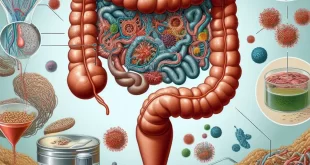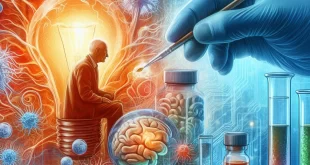It is crucial to understand that time plays a vital role when a heart attack occurs, as more than 92% of these incidents are fatal without immediate intervention, warns the French Federation of Cardiology. An upcoming study at the European Society of Cardiology congress underscores that the ability to spot the symptoms of a heart attack increases the chances of survival for individuals, both for bystanders and those who may find themselves in such a situation.
What are the symptoms of a heart attack? According to the study’s authors, these symptoms can include chest pain, radiating pain in the arms, jaw, and neck, dizziness, cold sweats, shortness of breath, nausea, and even loss of consciousness. Researchers examined the correlation between symptom recognition, the speed of medical intervention, and the patients’ health outcomes. They reviewed the records of nearly 12,000 individuals who had experienced a heart attack, with 10,623 having had a single incident and 1,136 having had multiple episodes.
Chest pain emerged as the most widely recognized symptom of a heart attack. Among the data collected, healthcare professionals asked patients about their ability to identify various warning signs: chest pain, shortness of breath, cold sweats, radiating pain to the jaw, shoulder, or arm, dizziness, vertigo, loss of consciousness, and stomach discomfort. Patients who could identify at least one of these symptoms were classified as “symptom-recognized,” while those unable to do so were grouped in the “non-symptom recognition” category. In general, just over half of the patients were able to identify heart attack symptoms. Notably, the majority of patients (92.9%) recognized chest pain as a symptom of a heart attack, while about a third recognized shortness of breath (32.1%) and cold sweats (31.4%). Radiating pain was recognized by just over a quarter of patients, while only 7.5% identified dizziness, vertigo, and loss of consciousness, and only 1.3% recognized stomach discomfort.
To delve deeper, researchers compared the time required for medical treatment and the health status of patients after their heart attack based on their ability to recognize symptoms. Approximately 57% of patients who correctly identified symptoms of a myocardial infarction received treatment within two hours of their crisis, compared to only 47.2% of those who did not recognize the symptoms. The results are striking: patients capable of recognizing the symptoms had a significantly lower in-hospital mortality rate (1.5%) compared to those who could not identify the symptoms of a heart attack (6.7%), as highlighted by the Korean researchers.
Additionally, it was observed that patients who had experienced multiple heart attacks were better at recognizing symptoms compared to those who had never had one. However, symptom recognition was still relatively low in both groups. Dr. Kyehwan Kim, the study’s lead author, and his colleagues believe that launching prevention and awareness campaigns is imperative to better educate the public on recognizing these various symptoms of a heart attack.
 medjouel.com Study Non Stop
medjouel.com Study Non Stop



